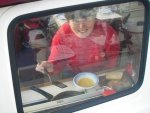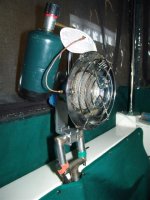Rather than repeating what I have posted in the past in its entirety, I refer you to a post toward the end of this thread by "RV" from the "Escapees" RV group forum:
http://www.rvnetwork.com/index.php?showtopic=60932
As a physician I have had the misfortune to pronounce dead several individuals who died from CO poisoning. Secondarily I have seen a number of chronic CO poisoning cases. Some of these were just driving their cars on the LA freeways. Also a certain number of auto accidents are caused by chronic CO poisoning each year. Yes, you are only going to use it when awake....but you get a little sleepy--and next thing you know you are asleep.
The Mr. Buddy is not a catalytic heater, it is a ceramic heater, and uses conventional flame technology, with a low oxygen sensor--which is basically a very simple device; if the flame over a tube cuts back to a certain point, it stops the gas flow. It does not actually "measure" oxygen level. High altitude will give lower oxygen levels--and increase the risk of CO poisoning. There is no CO monitoring in any of these heaters.
The second issue is that of explosive gas inside of an enclosed cabin. This is a story I end up repeating about once a year. A close friend had a stove which used a propane bottle. There was a candle burning in the room (post hurricane) when he inserted the bottle into the stove. The seal on the bottle failed, there was an explosion and fire as the entire content rapidly leaked. Fortunately he survived the 30% 3rd degree body burn, and 3 months in a burn unit.
For both of the above reasons I personally will not have a bottle type of propane/butane stove or heater inside of the cabin of my boat. (I do use a grill, and keep the bottles outside in the cockpit in the open air).
CO detectors. As noted before they need to be replaced every few years. I use the Kiddie NightHawk KN-COPP-B-LS, which has an LCD readout, so I know what the level of CO is. They are cheap and use 3 AA batteries. The very best CO detectors can be obtained from AeroMedix.com These are used in light plane cockpits and are very sensitive---but not "approved" for marine use. If you really want to know what the C O level is, get one of these, and put it right by your head.
Also as you age, if you have heart or lung disease or are a smoker, you are more susceptible to chronic CO poisoning. Personally I want to be safe, but each of us makes our own decisions.
:




